
HMS Vansittart was an Admiralty modified W-class destroyer built for the Royal Navy. She was ordered in January 1918 from William Beardmore & Company with the 13th Order for Destroyers of the Emergency War Program of 1918–19. She was the second Royal Navy ship to carry the name which was first used in 1821 for a hired packet.
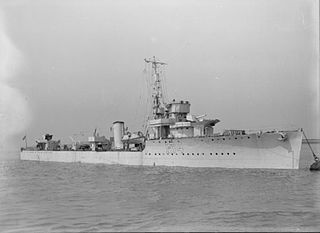
HMS Velox (D34) was a V-class destroyer built in 1918. She served in the last year of the First World War and was engaged in the Second Ostend Raid. During the interwar period she underwent a refit and continued serving during the Second World War as a long range convoy escort in the battle of the Atlantic. Post-war Velox was broken up in the reduction of the fleet. Sailors of the ship took part in the Royal Navy mutiny of 1919.

HMS Winchelsea (D46) was an Admiralty W-class destroyer of the Royal Navy, ordered 9 December 1916 from J. Samuel White at Cowes during the 1916–17 Build Programme.

HMS Verity was an Admiralty modified W-class destroyer built for the Royal Navy. She was the first ship to carry the name Verity. She was ordered in January 1918 from John Brown & Company of Clydebank with the 13th Order for Destroyers of the Emergency War Program of 1918–19.
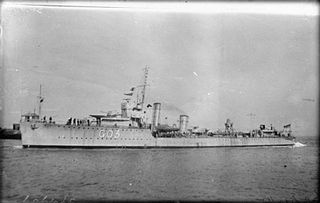
HMS Vortigern was a V-class destroyer of the Royal Navy. She served in both World Wars, and was sunk in 1942.

HMS Wrestler (D35) was a V and W-class destroyer built by the Royal Navy during the First World War and active from 1939 to 1944 during the Second World War. She was the first Royal Navy ship to bear that name, and the only one to do so to date.
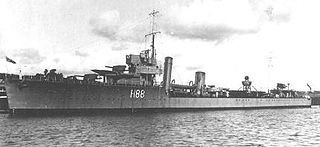
HMS Wakeful was a W-class destroyer of the Royal Navy, built under the 1916–1917 Programme in the 10th Destroyer order. Wakeful was assigned to the Grand Fleet after completion, and served into the early years of the Second World War. Wakeful was torpedoed and sunk during Operation Dynamo by a German E-Boat on 29 May 1940.

The first HMS Whirlwind was a W-class destroyer of the British Royal Navy that saw service during World War I and World War II.

HMS Wolfhound was one of 21 W-class destroyers built for the Royal Navy during the First World War. Completed in 1918 the ship only played a minor role in the war before its end. The ship was converted into an anti-aircraft escort destroyer during the Second World War and was badly damaged during the Dunkirk evacuation. Wolfhound survived the war and was sold for scrap in 1948.

HMS Wren (D88/I88) was an Admiralty modified W class destroyer built for the Royal Navy. She was ordered in April 1918 from Yarrow Shipbuilders Limited under the 13th Order for Destroyers of the Emergency War Program of 1918–19. She was the third Royal Navy ship to carry the name, which was introduced in 1653.
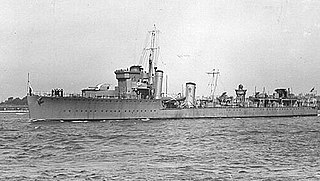
HMS Whitley (L23), ex-Whitby, was a W-class destroyer of the British Royal Navy that saw service in the British campaign in the Baltic Sea against Bolshevik forces during the Russian Civil War and in the early months of World War II.

HMS Vivacious (D36) was a V-class destroyer of the British Royal Navy that saw service in World War I and World War II.

HMS Winchester was an Admiralty W-class destroyer of the Royal Navy. She saw service in the First and Second World Wars.

The second HMS Vanity was a V-class destroyer of the British Royal Navy that saw service in World War I and World War II.

The first HMS Walrus (D24) was a W-class destroyer of the British Royal Navy that saw service in the final months of World War I.
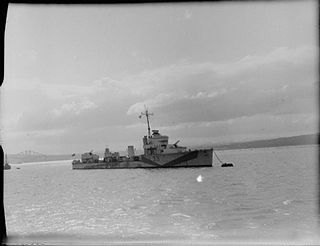
HMS Vivien (L33) was a V-class destroyer of the British Royal Navy that saw service in World War I and World War II.
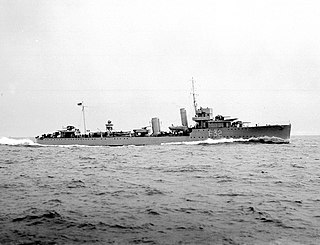
The first HMS Wessex (D43) was a W-class destroyer of the British Royal Navy that saw service in the final months of World War I and the early months of World War II.

The third HMS Windsor (D42) was a W-class destroyer of the British Royal Navy that saw service in the final months of World War I and in World War II.

HMS Viceroy (D91) was a W-class destroyer of the British Royal Navy that saw service in the final months of World War I and in World War II.

The eighth HMS Worcester, was a Modified W-class destroyer of the British Royal Navy that saw service in World War II. She later served as an accommodation ship as the second HMS Yeoman.
This page is based on this
Wikipedia article Text is available under the
CC BY-SA 4.0 license; additional terms may apply.
Images, videos and audio are available under their respective licenses.




















